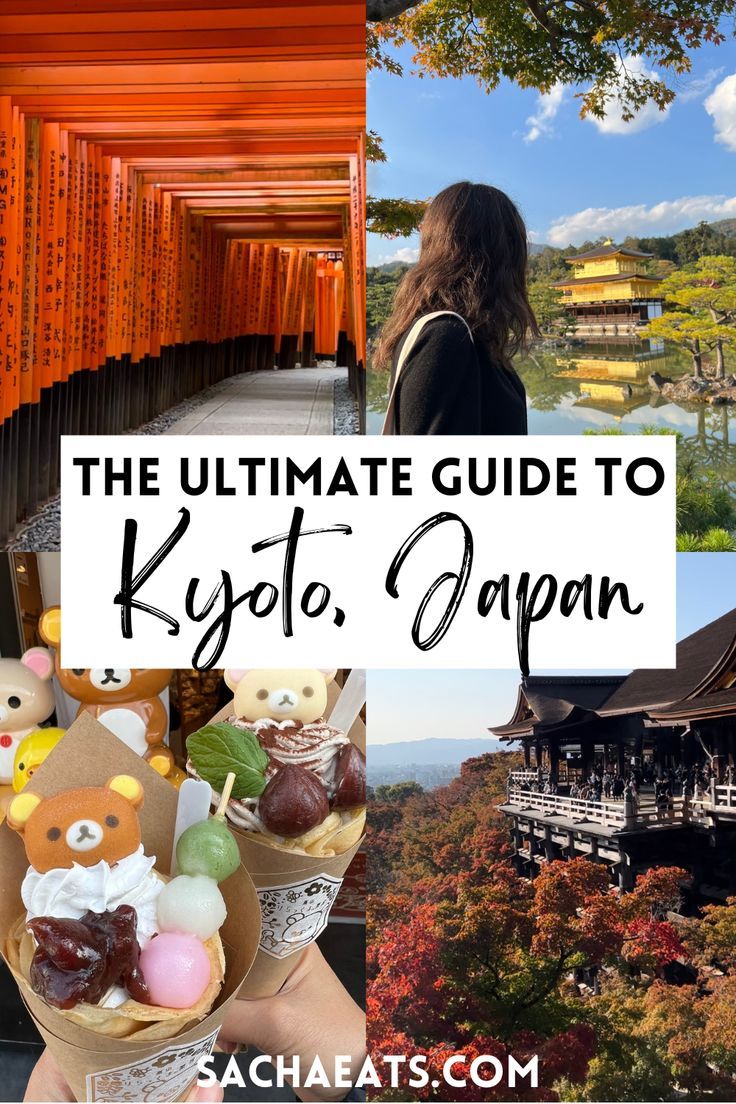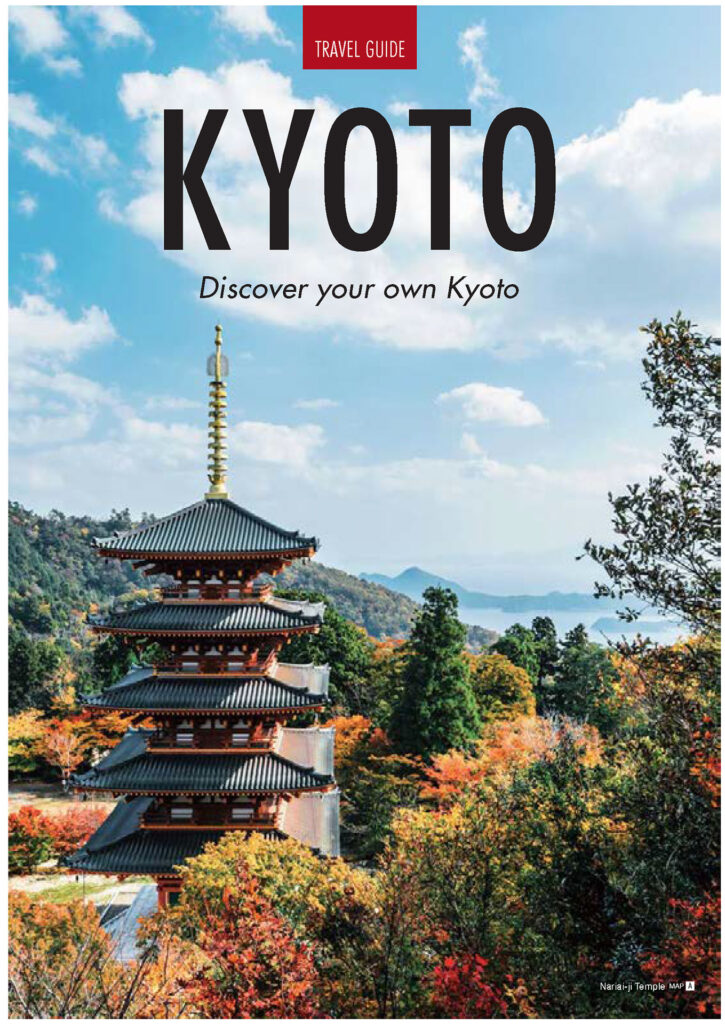
Kyoto, the former imperial capital of Japan, is a city that whispers tales of ancient emperors, serene gardens, and vibrant traditions. For over a thousand years, it served as the heart of Japanese culture, and today, it stands as a living museum, offering a captivating glimpse into a bygone era while embracing the pulse of modern life. From the shimmering golden pavilion to the bamboo forests that sway in the breeze, Kyoto is a destination that nourishes the soul and ignites the imagination. This comprehensive travel guide will equip you with everything you need to embark on an unforgettable journey through this enchanting city.
A Tapestry of History: Echoes of the Imperial Past
Kyoto’s history is deeply intertwined with the story of Japan itself. Founded in 794 AD as Heian-kyō ("City of Peace and Tranquility"), it remained the imperial capital for over a millennium, until the Meiji Restoration in 1868 when the emperor moved to Tokyo. This long reign as the center of power allowed Kyoto to flourish as a hub of art, literature, religion, and political intrigue.

Related Articles about Kyoto: A Journey Through Time and Tranquility:
- Romania: A Timeless Journey Through Castles, Mountains, and Ancient Traditions
- A Traveler’s Guide to Surabaya: Discovering the Soul of Indonesia’s City of Heroes
- Jordan: Where Ancient Sands Whisper Tales of Empires and Wonders
- Brazil: A Symphony of Sun, Samba, and Unforgettable Adventures
- The American Tapestry: A Comprehensive Travel Guide to the United States
During the Heian period (794-1185), aristocratic culture blossomed, giving rise to iconic literary works like "The Tale of Genji." The city witnessed the rise and fall of powerful samurai clans, the construction of magnificent temples and shrines that still stand today, and the development of unique artistic traditions such as tea ceremony, ikebana (flower arrangement), and Noh theater.
Despite suffering damage during various wars and periods of unrest, Kyoto’s commitment to preserving its heritage has been remarkable. Unlike many other Japanese cities, Kyoto was largely spared from the extensive bombing of World War II, a testament to its cultural significance. This preservation allows visitors to step back in time and experience the authentic essence of traditional Japan.
Top Attractions: Where Serenity Meets Splendor
Kyoto boasts an embarrassment of riches when it comes to attractions, each offering a unique facet of its rich heritage. Here are some of the absolute must-sees:
-
Kinkaku-ji (Golden Pavilion): A breathtaking Zen Buddhist temple, Kinkaku-ji is renowned for its top two floors completely covered in gold leaf, shimmering majestically against the backdrop of its surrounding pond and meticulously manicured gardens. Originally a retirement villa for a shogun, it was later converted into a temple. The reflection of the pavilion in the tranquil water is an iconic image of Kyoto.
-

Fushimi Inari-taisha Shrine: Prepare to be mesmerized by thousands of vibrant red torii gates that snake their way up the sacred Mount Inari. Dedicated to Inari, the Shinto god of rice, sake, and prosperity, this sprawling shrine offers a unique and unforgettable hiking experience. Each gate is a donation from individuals or companies, creating an awe-inspiring tunnel of vermillion.
-
Arashiyama Bamboo Grove: Step into a world of ethereal beauty as you wander through towering stalks of bamboo that rustle gently in the breeze. This iconic grove is a photographer’s paradise and offers a serene escape from the city’s hustle and bustle. Nearby, explore the Tenryu-ji Temple, a UNESCO World Heritage site with a stunning landscape garden.
-
Kiyomizu-dera Temple: Perched on a hillside with panoramic views of Kyoto, Kiyomizu-dera is famous for its wooden stage that juts out from the main hall, built without a single nail. The temple’s name, meaning "Pure Water Temple," comes from the Otowa Waterfall, where visitors can drink from streams believed to grant wishes for health, longevity, or success in studies.
-
Gion District: Immerse yourself in the traditional geisha district of Kyoto. Wander through charming narrow streets lined with wooden machiya houses, teahouses, and exclusive restaurants. If you’re lucky, you might catch a glimpse of a geiko (Kyoto geisha) or maiko (apprentice geisha) gracefully making their way to an engagement.
-
Nijo Castle: A UNESCO World Heritage site, Nijo Castle was the Kyoto residence of the Tokugawa shogunate. Its "nightingale floors" are designed to chirp when walked upon, alerting guards to intruders. The castle showcases impressive architecture, beautiful gardens, and exquisite painted screens.
-
Ryoan-ji Temple: Home to Japan’s most famous Zen rock garden, Ryoan-ji offers a minimalist masterpiece of contemplation. The garden consists of fifteen rocks arranged on a bed of raked white gravel, with the intriguing design that no matter where you sit, one rock is always hidden from view.
-
Nishiki Market: Known as "Kyoto’s Kitchen," this bustling covered market is a culinary adventure. Sample local delicacies, fresh produce, pickles, seafood, and an array of unique snacks. It’s the perfect place to experience the vibrant food culture of Kyoto.
Travel Tips for a Seamless Kyoto Experience
To make the most of your Kyoto adventure, keep these practical tips in mind:
-
Best Time to Visit:
- Spring (March-May): Famous for its stunning cherry blossoms (sakura), which typically bloom from late March to early April. The weather is pleasant, but it’s also peak season, so expect crowds and higher prices.
- Autumn (September-November): The vibrant fall foliage (koyo) paints the city in hues of red, orange, and yellow, creating a spectacular spectacle. The weather is generally mild and comfortable.
- Summer (June-August): Can be hot and humid with a risk of typhoons. However, it’s also a time for lively festivals like the Gion Matsuri.
- Winter (December-February): Cold but generally less crowded. Snowfall can add a magical touch to the temples and gardens, especially in the early morning.
-
Getting Around Kyoto:
- Public Transportation: Kyoto has an excellent public transportation system. The bus network is extensive and reaches most attractions. The subway system is also efficient, with two main lines.
- Japan Rail Pass: If you’re traveling to Kyoto from other parts of Japan, a Japan Rail Pass can be a cost-effective option.
- Cycling: Renting a bicycle is a fantastic way to explore certain areas, especially along the Kamo River or within less crowded neighborhoods. Be mindful of pedestrian traffic.
- Taxis: Taxis are readily available but can be expensive. They are useful for shorter distances or when traveling with a group.
- Walking: Many of Kyoto’s attractions are clustered together, making walking an enjoyable way to discover hidden gems and soak in the atmosphere.
-
Accommodation Options: Kyoto offers a wide range of accommodation to suit every budget and preference.
- Ryokans: For an authentic Japanese experience, stay in a ryokan, a traditional inn with tatami mat rooms, futon beds, and often onsen (hot springs). Many offer exquisite kaiseki (multi-course) dinners.
- Hotels: From luxury international chains to business hotels and budget-friendly options, Kyoto has a diverse hotel scene.
- Guesthouses and Hostels: Ideal for budget travelers, offering dormitory beds and private rooms, often with communal kitchens and social spaces.
- Machiya Houses: Renting a renovated traditional wooden townhouse (machiya) can provide a unique and immersive cultural experience, especially for families or groups.
-
Cultural Etiquette:
- Shoes: Remove your shoes before entering homes, temples, and some restaurants. Slippers are usually provided.
- Bowing: A slight bow is a common greeting and sign of respect.
- Eating: It’s considered rude to stick chopsticks upright in your rice or pass food directly from chopstick to chopstick.
- Noise: Be mindful of noise levels, especially in quiet areas like temples and residential neighborhoods.
- Photography: Always check for signs regarding photography restrictions within temples and museums.
-
Connectivity: Consider renting a pocket Wi-Fi device or purchasing a local SIM card for easy internet access.
-
Currency: The currency is the Japanese Yen (JPY). Credit cards are widely accepted in larger establishments, but it’s always good to have some cash on hand for smaller shops and local markets.
-
Language: While many tourist areas have English signage and some staff speak English, learning a few basic Japanese phrases will be greatly appreciated. "Konnichiwa" (hello), "Arigato gozaimasu" (thank you), and "Sumimasen" (excuse me/sorry) are a good start.
Beyond the Tourist Trail: Discovering Kyoto’s Soul
While the iconic attractions are undoubtedly magnificent, venturing off the beaten path can reveal Kyoto’s deeper charm:
- Philosopher’s Path: A picturesque canal-side walk lined with cherry trees, especially beautiful during cherry blossom season.
- Kurama-dera Temple: A mountain temple accessible by a scenic train ride, offering a more spiritual and less crowded experience.
- Daitoku-ji Temple Complex: A vast Zen Buddhist complex with numerous sub-temples, each with its own unique gardens and architecture.
- Pontocho Alley: A narrow, atmospheric alley running parallel to the Kamo River, lined with traditional restaurants and bars, offering a romantic evening dining experience.
- Kyoto Imperial Palace: While reservations are no longer strictly required, guided tours offer insight into the former imperial residence.
Culinary Delights: A Gastronomic Journey
Kyoto is a paradise for food lovers. Don’t miss the opportunity to savor its culinary specialties:
- Kaiseki Ryori: A multi-course haute cuisine that emphasizes seasonality, artistry, and fresh ingredients.
- Shojin Ryori: Traditional vegetarian Buddhist cuisine, often found in temple restaurants, known for its delicate flavors and healthy ingredients.
- Yudofu: Simmered tofu, a simple yet delicious dish often enjoyed in winter.
- Matcha: Kyoto is famous for its high-quality matcha green tea. Indulge in matcha ice cream, sweets, and experience a traditional tea ceremony.
- Tsukemono: Japanese pickles, a staple of Japanese cuisine, with a wide variety available at Nishiki Market.
Conclusion: A Timeless Embrace
Kyoto is more than just a destination; it’s an experience that lingers long after you depart. It’s a city where ancient traditions gracefully coexist with modern life, where serene gardens offer solace, and where every corner holds a story. Whether you’re seeking spiritual enlightenment, artistic inspiration, or simply a profound connection with Japanese culture, Kyoto will undoubtedly captivate your heart and leave you with memories to cherish for a lifetime. Pack your bags, open your mind, and prepare to be enchanted by the timeless allure of Kyoto.





